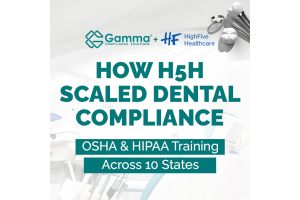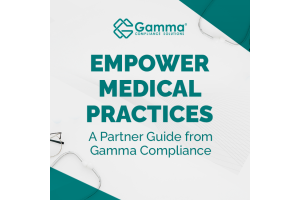Page 2 - OSHA Guides
Make sure your workplace safety standards are always up to date and compliant with OSHA Compliance Guides. Whether you’re looking for resources for medical facilities, dental offices, veterinary practices, infection control procedures, state-by-state requirements, or more, you can find a wide range of guides here at Gamma Compliance Solutions.
Stay updated with industry-specific manuals, training materials, and regional insights to ensure workplace safety and regulatory compliance effortlessly. Browse OSHA compliance guides below.
- August 28, 2024OSHA Guides
Ensuring compliance with the Occupational Safety and Health Administration (OSHA) regulations is crucial for dental offices to provide a safe workplace for their employees and patients. These regulations necessitate a thorough and ongoing adherence strategy.
- August 28, 2024OSHA Guides
When it comes to running a business, nothing is more important than the safety of your staff and workplace. Understanding and mitigating workplace hazards is not merely a regulatory requirement; it's a fundamental responsibility that organizations have toward their employees.
- August 28, 2024OSHA Guides
Infection control is a critical component of maintaining a safe and effective veterinary practice. Protecting patients and staff from communicable diseases ensures the health and longevity of any practice and compliance with industry regulations.
- August 28, 2024OSHA Guides
At Gamma Compliance Solutions, we prioritize the prevention of healthcare workplace violence through comprehensive compliance training programs. Our training modules feature courses to educate healthcare professionals on potential threats and equip them with the necessary skills to effectively mitigate and manage violent situations.
- March 27, 2024OSHA Guides
The Occupational Safety and Health Administration (OSHA) is a vital federal agency tasked with ensuring the health and safety of American workers across various sectors. Among its wide-ranging mandates, it sets and enforces standards that are specific to healthcare, one of which includes first aid.
- March 15, 2024OSHA Guides
The Occupational Safety and Health Administration (OSHA) has established rigorous guidelines to safeguard healthcare workers from potential hazards in healthcare settings. OSHA's personal protective equipment (PPE) requirements protect healthcare professionals from exposure to infectious agents, harmful chemicals, and other occupational hazards.
Compliance with OSHA healthcare PPE requirements is crucial for businesses to promote safety among their employees and patients. Without the proper training and assessments, your business could put its employees and patients at risk, face fines, and develop a negative reputation. This is why it’s so crucial to understand PPE guidelines and how they apply to your business.
- March 15, 2024OSHA Guides
The Occupational Safety and Health Administration (OSHA) stipulates various regulations to manage medical waste disposal effectively, ensuring healthcare workers’ and the general public’s safety. These regulations include examples like the Bloodborne Pathogens Standard. It emphasizes the need for all healthcare facilities to have an exposure control plan outlining how to handle, store, and dispose of potentially infectious materials. OSHA also requires practices to appropriately label biohazardous waste, ensuring that all containers or bags for disposal are red or orange and carry the universal biohazard symbol. Furthermore, OSHA mandates rigorous training for all employees handling medical waste, ensuring they’re familiar with risks and proper procedures. These regulations underscore the importance of safe practices in the management of medical waste.
- March 15, 2024OSHA Guides
An Occupational Safety and Health Administration (OSHA) exposure control plan is a critical protocol designed to minimize or eliminate employees' exposure to hazardous substances in the workplace. It outlines measures to identify potential exposure risks, implement safety practices, provide training, and ensure regular updates to maintain efficacy.
- August 09, 2023OSHA Guides Infection Control
Protective personal equipment (PPE) plays an important role in health care, preventing the spread of diseases and contact with toxic or sharp materials. PPE comes in many forms, providing multiple ways to protect health-care professionals and patients. Surgical masks and respirators are some of the most effective health-care PPE. Although both masks shield your mouth and nose, surgical masks and respirators differ in their purpose and use. Knowing the distinction between surgical masks versus respirators enhances the health and safety of your medical workplace and affects everyone who interacts with that space, from doctors to visitors. Check out our simple guide on surgical masks versus respirators and keep your office safe.
- July 14, 2023OSHA Guides
The Occupational Health and Safety Act (OSHA) establishes and enforces workplace health and safety standards. OSHA regulations cover an array of workplace health and safety protocols designed to combat the many possible dangers in one’s work environment. However, it is up to employers and employees to implement these best practices, follow regulation standards, and put in the effort to make their workplaces healthy and safe.
To ensure proper implementation of health and safety protocols, the Department of Labor sends out a team of OSHA representatives to conduct a workplace inspection. Learn how OSHA inspections are conducted and prepare to pass your inspection with flying colors.





